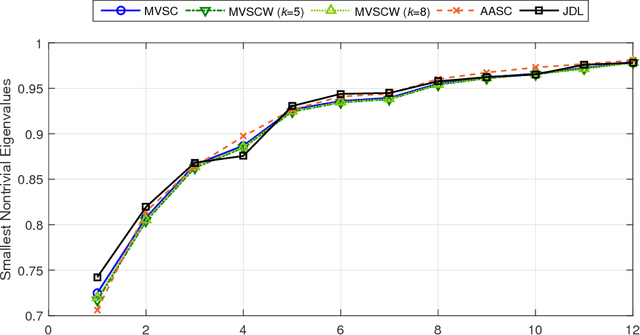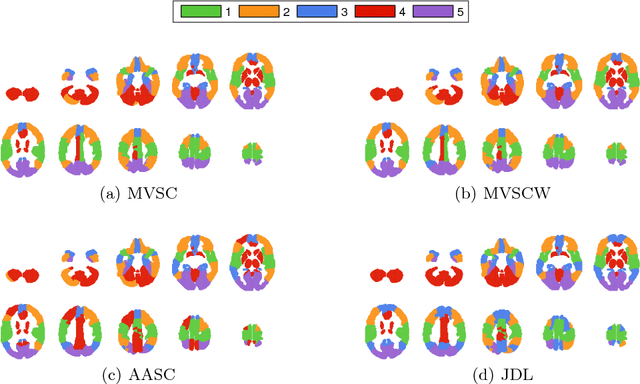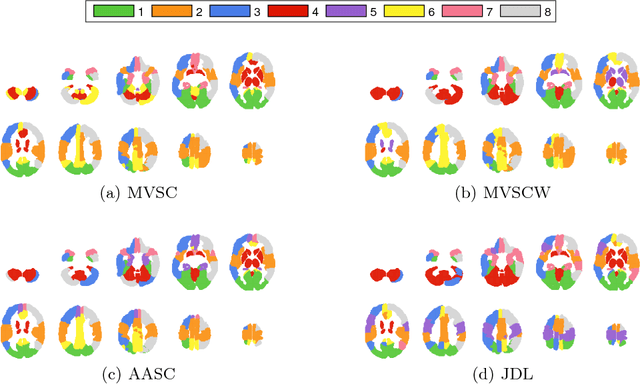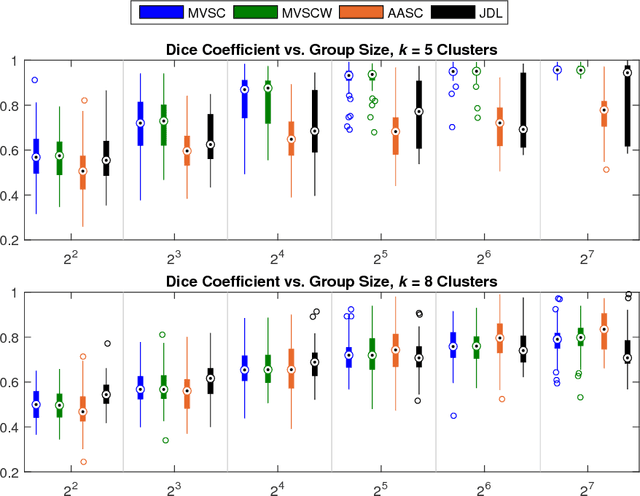Harmeet Singh
Multiple-View Spectral Clustering for Group-wise Functional Community Detection
Nov 21, 2016



Abstract:Functional connectivity analysis yields powerful insights into our understanding of the human brain. Group-wise functional community detection aims to partition the brain into clusters, or communities, in which functional activity is inter-regionally correlated in a common manner across a group of subjects. In this article, we show how to use multiple-view spectral clustering to perform group-wise functional community detection. In a series of experiments on 291 subjects from the Human Connectome Project, we compare three versions of multiple-view spectral clustering: MVSC (uniform weights), MVSCW (weights based on subject-specific embedding quality), and AASC (weights optimized along with the embedding) with the competing technique of Joint Diagonalization of Laplacians (JDL). Results show that multiple-view spectral clustering not only yields group-wise functional communities that are more consistent than JDL when using randomly selected subsets of individual brains, but it is several orders of magnitude faster than JDL.
Contravening Esotery: Cryptanalysis of Knapsack Cipher using Genetic Algorithms
Jun 20, 2016Abstract:Cryptanalysis of knapsack cipher is a fascinating problem which has eluded the computing fraternity for decades. However, in most of the cases either the time complexity of the proposed algorithm is colossal or an insufficient number of samples have been taken for verification. The present work proposes a Genetic Algorithm based technique for cryptanalysis of knapsack cipher. The experiments conducted prove the validity of the technique. The results prove that the technique is better than the existing techniques. An extensive review has been carried out in order to find the gaps in the existing techniques. The work paves the way of the application of computational intelligence techniques to the discipline of cryptanalysis.
 Add to Chrome
Add to Chrome Add to Firefox
Add to Firefox Add to Edge
Add to Edge